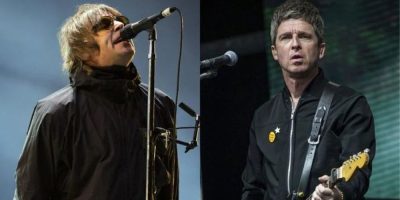
By Sarah Ritchie
Prime Minister Justin Trudeau is en route to this week's NATO leaders' summit in Lithuania, where Canada is likely to play a larger-than-usual role in two critical discussions: the alliance's expanding membership and its efforts to refocus on collective defence.
Trudeau departed for Riga, Latvia, from Ottawa on Sunday evening. He is due to meet with that country's leaders on Monday before heading to the Lithuanian capital for the first day of the NATO summit on Tuesday.
At last year's summit in Madrid, NATO leaders identified Russia as "the most significant and direct threat to allies' security and to peace and stability in the Euro-Atlantic area" in a strategic concept document that set out their intent to strengthen deterrence and defence in the region.
That came after a meeting in Brussels in March 2022, when leaders agreed to deploy four new multinational battle groups on the eastern flank in Bulgaria, Hungary, Romania and Slovakia, adding to those in Estonia, Latvia, Lithuania and Poland.
The alliance has drafted a new defence plan that leaders will be asked to approve in Vilnius, one that is being described as a return to its Cold War stance.
"What we're seeing now is really a return to NATO's core business," said Tim Sayle, a NATO historian and professor at the University of Toronto.
He said this likely also means a return to more challenging negotiations among members as they decide on defence policy and procurement, at the same time as they are debating whether to allow Sweden and Ukraine to join. And on both topics, he said, allies will be looking to Canada.
"Rarely are there summits where Canada would be a focus of any elements, but I do think (it) is here," Sayle said.
"Canada has a decision to make about its role in the discussion about Ukraine, but it also has this decision to make about Canadian defence spending and just what kind of ally Canada is going to be."
Adm. Rob Bauer, the chair of NATO's military committee, told media at a July 3 briefing that the new defence plan is split into three parts: the southeast region including the Mediterranean and the Black Sea, the central region from the Baltics to the Alps and the High North and Atlantic region.
Once the plans are approved, the real work begins. "Then we have to go and do our work to reach the higher number of forces with a higher readiness, we need to exercise against the plans, we need to buy the capabilities that we require," Bauer said.
That will require more money. Only about a third of NATO members are meeting the agreed-upon target of spending two per cent of their GDP on defence — which includes a pledge to dedicate one-fifth of that funding to equipment.
Bauer said he expects two per cent will be the spending floor, instead of the target, by the time the summit is over.
"There is perhaps a stronger link than ever before between the new defence plans, the new defence investment pledge and the NATO defence planning process," NATO spokesperson Oana Lungescu said at the July 3 briefing.
For the countries that are lagging behind, there will be increasing pressure to step up.
Canada spends about 1.3 per cent of its GDP on defence and has no public plan to get to the current target. Defence Minister Anita Anand has insisted that Canada's contributions to the defence of Ukraine and its leadership in heading up a NATO battle group in Latvia are more important.
Before attending the NATO summit, Trudeau is set to participate in meetings Monday with Latvia's president, Edgars Rinkēvičs, and its prime minister, Krišjānis Kariņš.
Trudeau is also expected to meet Canadian Armed Forces members who are part of the country's largest overseas mission.
But even in Latvia, Canada seems to be lagging behind. It's been more than a year since Anand pledged to expand the battle group to a combat-ready brigade, and detailed plans are still being negotiated. Battle groups typically have close to 1,000 troops, while military members in a brigade number about 3,000.
Canada has committed to sending a tank squadron with 15 Leopard 2 tanks and some 130 personnel to Latvia starting this fall, but it is unclear how many more troops will join the 800 Canadians already in place.
Other countries have gone further. Germany has pledged to station a 4,000-soldier brigade in Lithuania. The United Kingdom, which is leading a battle group in Estonia, and the United States, which leads another in Poland, tested their ability to quickly scale up to a brigade earlier this spring.
Leaders in Vilnius are also likely to focus on the status of Sweden and Ukraine, each of which has asked to join NATO.
Last-minute talks aimed at getting Turkiye and Hungary on side with allowing Sweden to become a member have not been successful. Its Nordic neighbour Finland joined most recently, in April.
If Sweden's membership is approved, Bauer said it won't take long to adapt the defence plans.
"Sweden is at the table in the military committee, in the North Atlantic Council every week. So they know basically everything already," he said.
More contentious than that is the issue of when to admit Ukraine.
Some nations are pushing for immediate membership. U.K. Defence Secretary Ben Wallace said last month that he hopes to see an expedited process.
Meanwhile, Trudeau has repeatedly stated that Canada supports Ukraine's membership "when the conditions are right," without defining what those conditions are.
Sayle said it's likely that other countries will expect a clearer response this time given the magnitude of the decision: whether to admit a nation that is in the midst of an active invasion to an alliance focused on collective defence.
"I think that what NATO says about Ukrainian membership will impact both the Ukrainian and Russian strategic calculations in this war, and any peace that might follow," Sayle said.
Banner image: Prime Minister Justin Trudeau boards a government plane in Ottawa, Sunday, July 9, 2023. THE CANADIAN PRESS/Adrian Wyld
This report by The Canadian Press was first published July 9, 2023.





